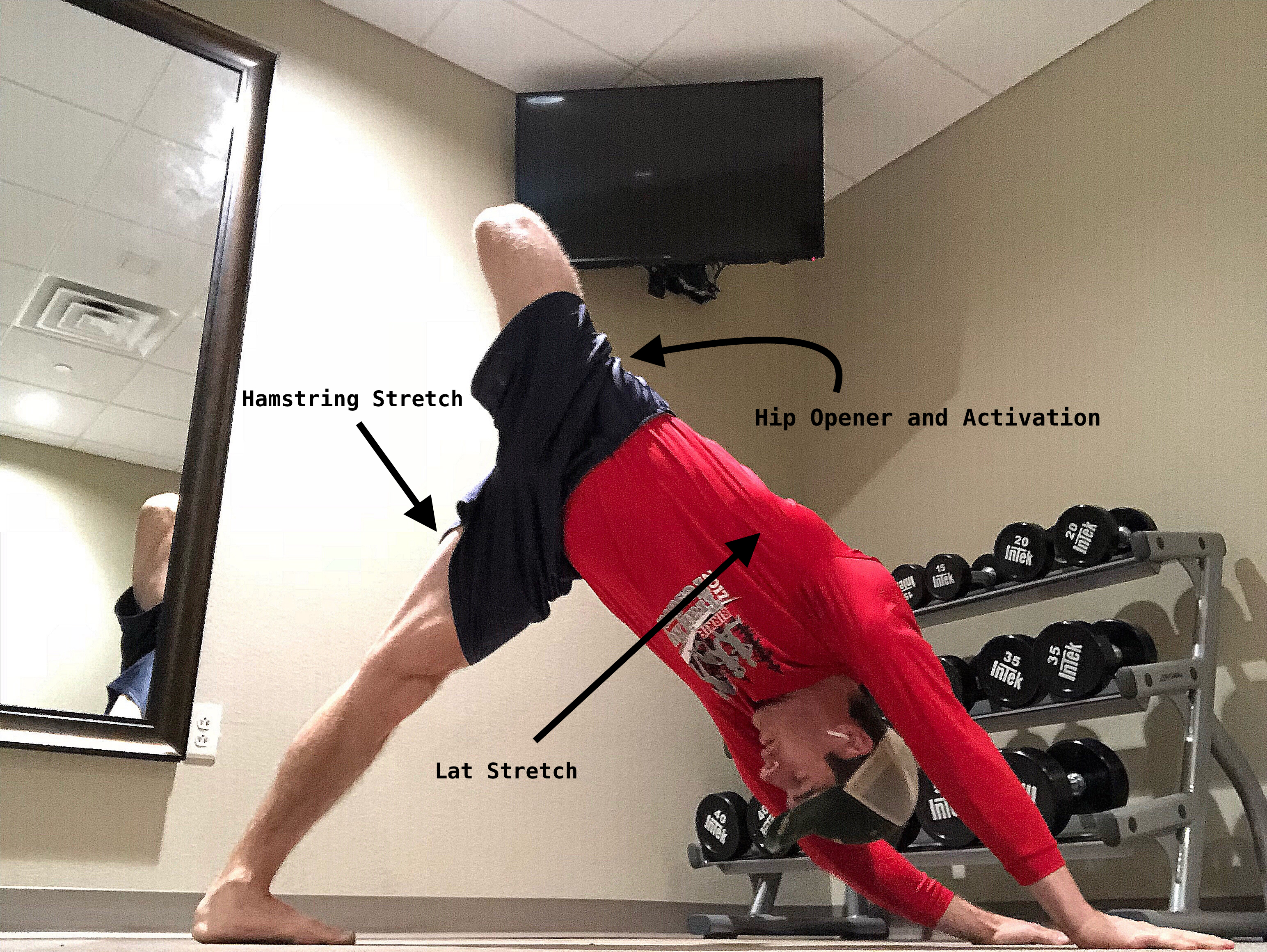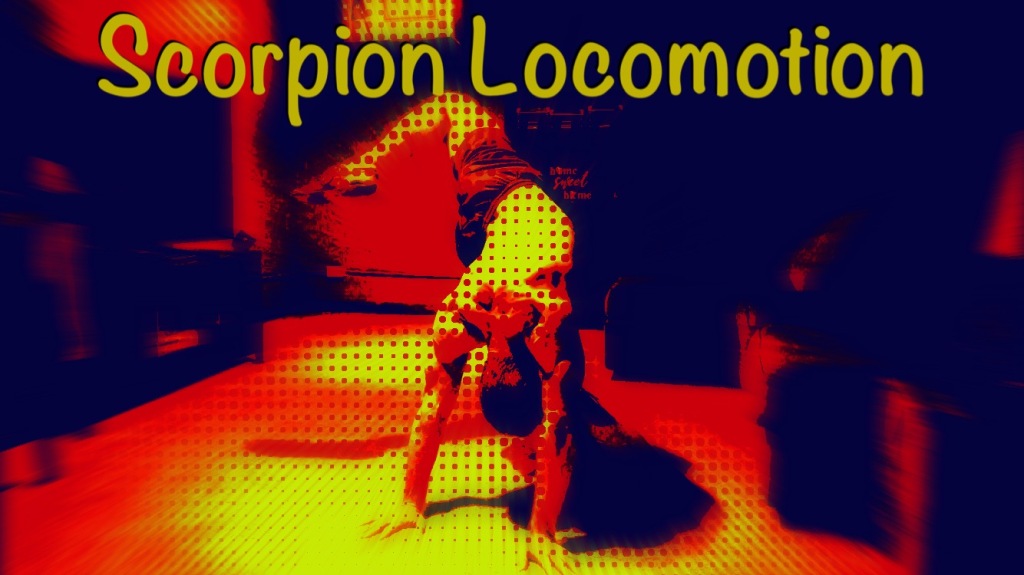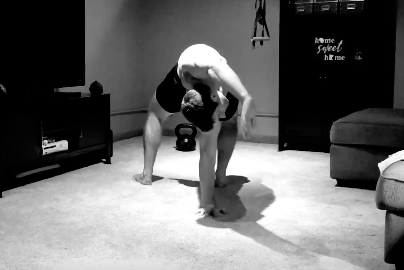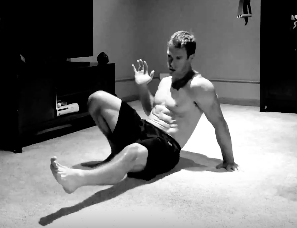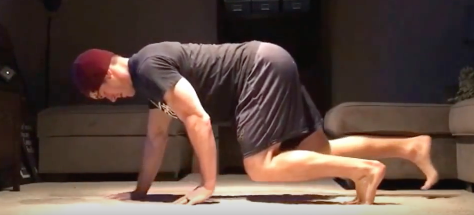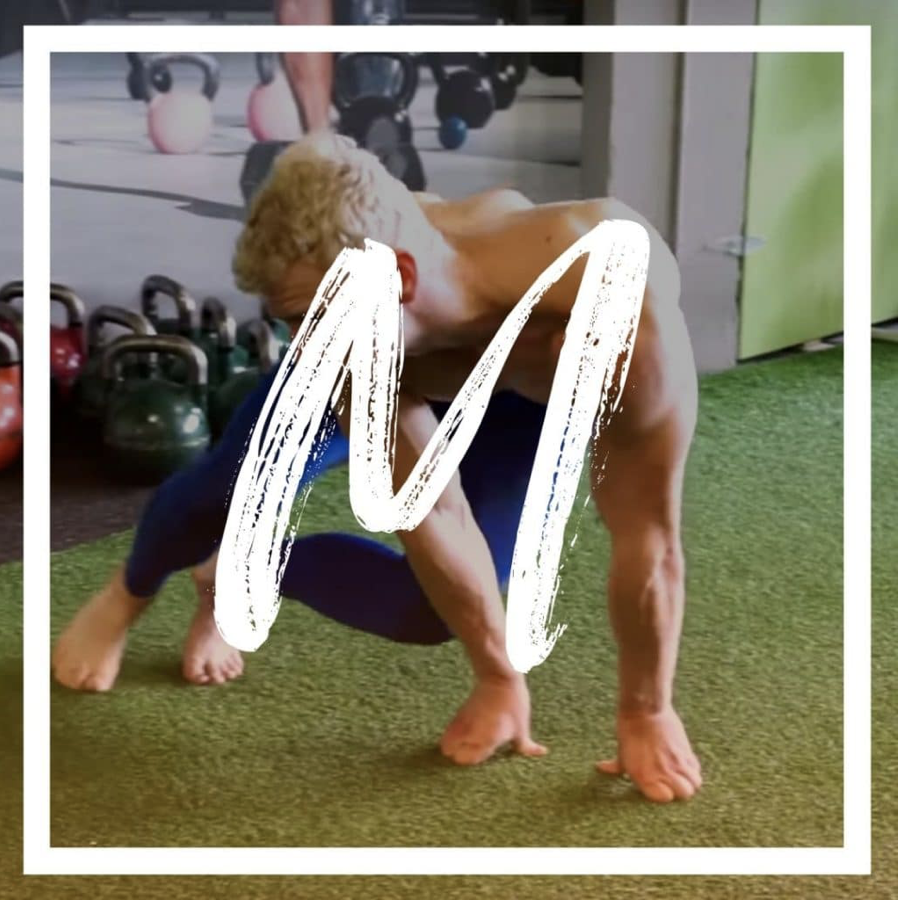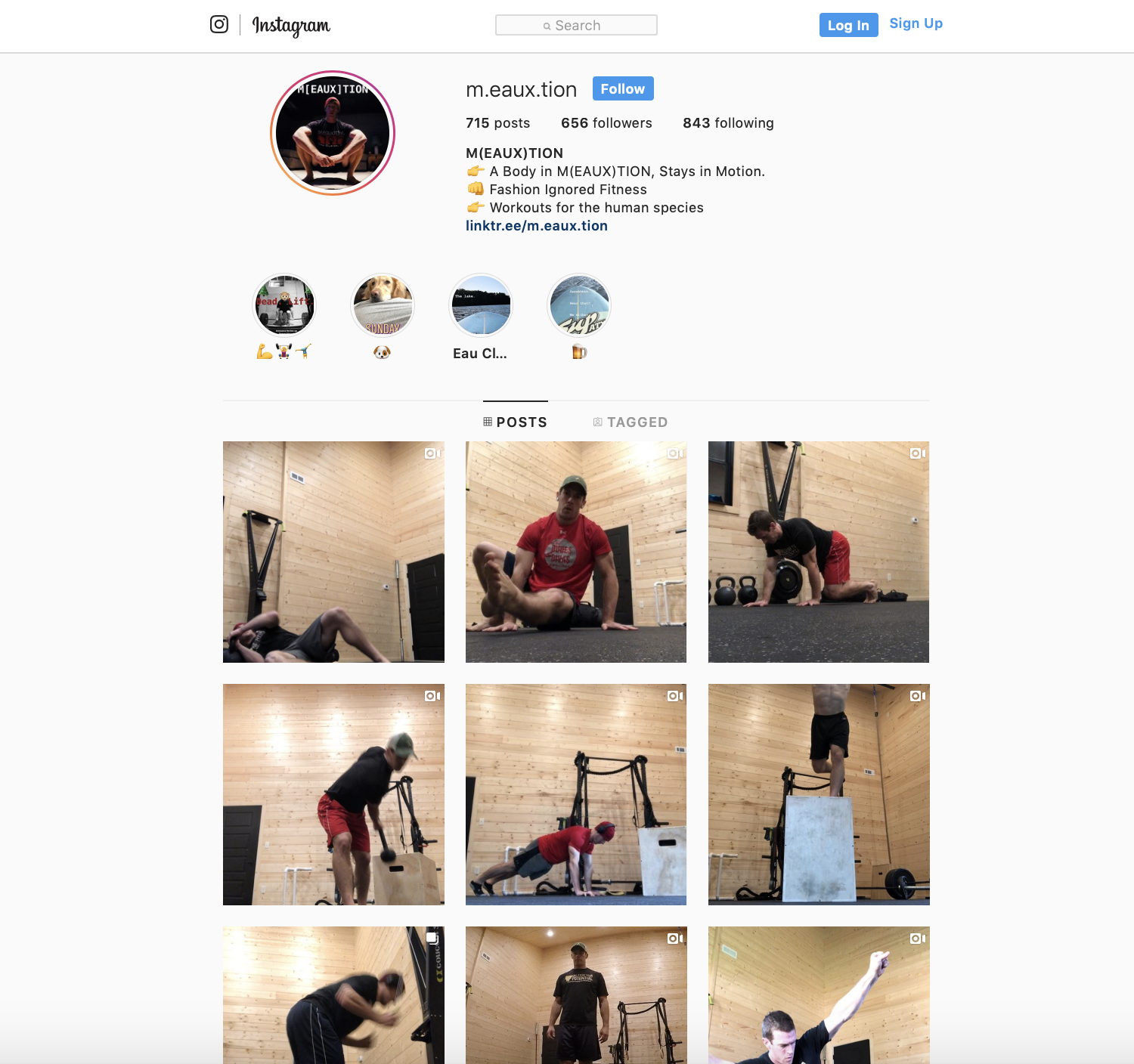You found this article because you’re curious about the benefits of crawling.
Good for you!… because crawling (and ground-based movement in general) is one of the most underutilized methods in fitness. And abused.
Abused? Huh? Yes, abused.
Lots of fitness professionals are infatuated with high-intensity approaches to EVERYTHING.
Rushing bear crawls for time has its place, but it lacks the true benefits earned from slowing down a crawl pattern to build movement coordination and build skill.
Crawling is not just for babies. Adults can get pretty significant benefits from practicing crawling patterns on a regular basis.
How to progress crawling patterns beyond the basics is lesser-known, and can completely change your outlook on the activity.
I’ll talk a little more about moving beyond the basics of this article further down.
Notable benefits of crawling for adults:
- Neural system development (brain-body connection to be able to do more stuff)
- Improvement in coordination, learning, and behavior
- Strengthen the shoulder complex
- Increase proprioceptive feedback, hand strength, and dexterity
- Core developer
- Mobility training for the joints like hips and shoulders
- Excellent transfer from the gym into real-world tasks and activities
A large majority of adults de-evolve with age.
This is a sad reality.
When we are young, we move frequently. Somewhere along the way, usually, after college ends and careers start, daily movement nose dives.
Non-exercise activity drops, which is concerning because of the undeniable data being published related to daily step count and the relationship to all-cause mortality.
Movement, and our ability to move well, is a use it or lose it situation. Wolff’s Law at it’s finest. Either keep moving or the ability to move gradually declines.
So, before you listen to that fitness pro barking out orders to plow through a 60-minute high-intensity crawling workout, please consider taking a more sensible approach.
Haven’t worked out consistently for a while? Guess what… biologically you’re different now.
Work back into slow, in manageable doses, with adequate rest and recovery separating work sets and workouts throughout the week.
Now, the positive news is that you can get back into fitness, movement, and more specific to this article, CRAWLING, right now.
Below are some AMAZING introductory drills that’ll reveal how challenging bodyweight, the floor, and a few positional shifts can be.
[FYI: Consistency with physical practice is HUGE, one of the deciding factors if you achieve goals. Not just with exercise, but with anything. You must continue to practice these exercises to earn the benefits. Fitness is not an instant gratification game… it’s the opposite. People who continually show up and put in the work, get the reward. Play the LONG GAME]
If you’re already an avid lifter or engaged in some form of exercise most days of the week, great! You’ll get plenty of benefit from these drills, and likely find them to be challenging beyond what you anticipated.
Here. We. Go.
Clear a small space. You don’t need much. A 6ft x 6ft space free of furniture and other obstructions will work.
Crawling in small spaces gets the green light from me. You can get a ton of work done inside of an imperfect space.
Reach your arms out, spin around one time. Did you touch anything? No? You’re good… let’s get to work.
Start with Non-Moving Holds
Non-moving, or static, variations are a logical place to acclimate to the demands of crawling.
The purpose of these drills is to get a feel for what a good body position feels like. Take a mental note of what you’re feeling in the arms, shoulders, chest, core, and lower body. Be in the moment, not somewhere else.
Pro-tip: Once you’ve locked in body position, imagine balancing a glass of water on your back. Don’t spill a drop. Or, place a shoe or other small object on your back for immediate feedback.
Remain still, stable, and avoid jostling as much as possible!
To start, practice holding these two positions for 3 sets of 30-40 seconds:
Limit the Base of Support from 4-Points to 3-Points
Ok, now, let’s play around with the impact of limiting the base of support does to these exercises.
Perform 3 sets of 8 shoulder taps (each arm):
During each shoulder tap, your body is doing it’s best to react and re-stabilize itself given the change of floor contacts. The loaded arm takes on the weight of the upper body, working overdrive.
Contralateral Lift Offs
Next, let’s play around with limiting the base of support from 3-points, down to 2-points of contact.
This next series of drills are TOUGH.
You’re going to lift the opposite arm and leg AT THE SAME TIME and hold that position for 10-15 seconds:
If you want, speed up the tempo. Pause and hold the 2-point position for 2-3 seconds before moving to the other side. Keep alternating for time (60 seconds) or for reps (12-15 reps).
Crawl
Set a timer and work each crawling pattern for 3 sets of 30-60 seconds PER EXERCISE.
Move slow, focused, and with control.
Keep your mind’s eye on body position and make hand/foot contacts quiet. Soft and quiet floor interactions are closely associated with control.
Crawling has been an important part of my workouts for a long time. It’s become an essential component of my warm-ups, workouts, and conditioning circuits.
If you find any of the drills above to be overwhelming, you’re not alone. To be honest, even short duration basic variations like the forward/backward crawl was soul-crushing for me in the beginning.
Anything new generally is. Your body doesn’t know how to be efficient yet. Soreness will likely follow in the days ahead.
But, adaptation is a beautiful thing. I made gradual progress from non-moving variations, to a limited base of support hold and into basic crawling patterns and beyond.
Today, I’ll engage in more aggressive crawl workouts that last anywhere from 5, 10, 15 minutes without breaks. But that didn’t happen overnight.
What’s cool about crawling is that it can be progressed far beyond the basics described in this article.
The lizard crawl is a prime example of an advanced, low position crawling pattern that’ll put your strength to the test. A 15-foot lizard crawl can feel like 50 feet.
Leveraging the principle of progressive loading and add weight to crawling exercises to further challenge your strength and coordination. Again, this doesn’t happen overnight, but it’ll give you a glimpse into where you can take this stuff.
Sometimes my workouts are purely ground-based movement sessions jam-packed with crawling and other unique movements.
Benefits and results?
Here’s what I get out of crawling work.
1. Skill transfer. Transitioning from a standing position or walking to the floor is second nature now. I don’t blink. The transition work is seamless. It’s amazing how often I use crawling in real-world situations with my kids, to complete a task or while in the woods hunting.
2. Lean muscle. Nutrition is king for body composition, but the added time under tension crawling definitely added some muscle and definition to my frame. I don’t chase aesthetics, but it’s a nice added bonus.
3. Gains in other lifts. Pushing, squatting, deadlift, etc… all felt more organized. Weight increased, volume increased (reps/sets per workout) and progress was made.
4. Fun. If you’re stuck in a workout rut, it’s time to inject something different into the mix. Doing the same thing over and over will drive you insane, and can fizzle out your interest in exercise. Mix in some crawling, it’s both challenging and refreshing.
Crawling is only the tip of the iceberg. There’s SO MUCH more to explore inside of the ground-based movement category.
Ground-based training is a fantastic supplement to traditional resistance training and mobility work.
Want to go further down the rabbit hole?
If you want to dive into more ground-based work, I don’t blame you and quite frankly I highly recommend you continue to learn about this stuff.
Check out Animal Flow or Movement20XX.
These are the premier ground-based movement training systems. Both are comprehensive platforms with subtle differences in approach.
Animal Flow integrates different training methodologies: gymnastics, break dancing, Yoga, calisthenics, Capoeria, and various crawling and locomotion variations into movement sequences and flow.
Movement 20XX you to use this article as a stepping to investigate comprehensive training programs like Animal Flow and Vahva Fitness Movement20XX.
I’ve shared these programs with thousands of people and the feedback has been tremendous.
Which program is the best? Tough question to answer, both are great.
Lately, I’ve been guiding people to Movement20XX. Movement20XX creator, Eero Westerberg, shares a similar approach to training as me. Naturally, my compass points toward the Movement20XX curriculum.
At the end of the day, both programs deliver amazing content that’s clearly articulated. Skill level doesn’t matter.
Beginners will get the coaching they need, and so will advanced movers who are seeking mastery and next-level gains.




